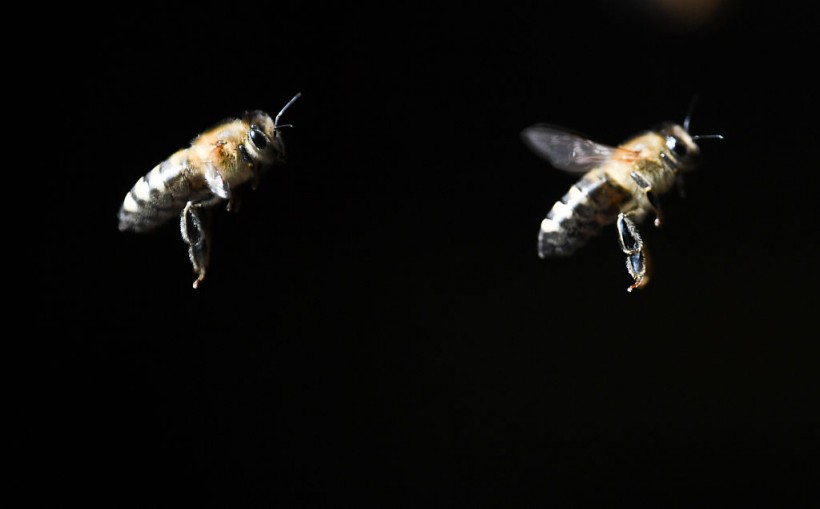A new study has recently taken inspiration from a bee technique or behavior to develop a way for robots to communicate.
The "essence" of the "waggle dance" performed by honeybees is to alert others to the site of flowers rich in nectar, as specified in a EurekAlert! report, goes like this: "Where are the flowers, and how distant are they?"
Essentially, the first robot is tracing a shape on the floor, and the orientation of this shape, as well as the time it takes to trace it, tells the second robot the required direction and travel distance.
The approach could prove an invaluable situation where robot labor is needed, although network communications are undependable, like in a disaster area or space.
ALSO READ: New Study Reveals Large Bumblebees Learn the Best Flowers' Spots

Honeybees take non-verbal communication to a new level as they do the waggle dance to help robots communicate and perform tasks.
The 'Waggle Dance'
If one ever finds himself in a noisy environment, like a factory floor, he may have noticed that humans are an expert at communicating through gestures.
More so, humans are not the only ones. In fact, honeybees are taking non-verbal communication to an entirely new level.
Wiggling their backside while parading through the hive lets other honeybees know where food can be located.
The waggle dance lets other bees know the food's direction with respect to the hive and the sun, and the dance's duration lets them know how distant it is. Specifically, it is a simple yet effective approach to conveying complicated geographical coordinates.
Robotic Cooperation
As inundated in the study published in the Frontiers in Robotics and AI journal, this creative communication method inspired the scientists behind the latest study to apply it to the robotics world. Robot cooperation, in particular, enables multiple robots to coordinate and complete complicated tasks.
Usually, robots communicate through digital networks, but what happens when these are undependable, like during an emergency or in remote areas? Furthermore, the question about how humans communicate with robots in such a scenario.
To answer the questions, the study investigators designed a visual communication system for robots embedded with onboard cameras, using algorithms that enable them to interpret what they're seeing.
The systems are tested through simple tasks, where a package in a warehouse needs to be moved. Additionally, the system enables a human to communicate with a "messenger robot," supervising and instructing a handling robot that carries out a task.
Human and Robot Gestures
In his case, the human can communicate with the messenger robot through gestures, like a raised hand with a closed fist.
Essentially, the robot can recognize such a gesture using its onboard camera and skeletal tracking algorithms. Once the human has exhibited to the messenger robot where the package is, it conveys this information to the handling robot.
This involves positioning itself before the handling robot and tracing a particular shape on the ground. Lastly, the study put it to the test using a computer simulation, and with actual robots and human volunteers.
Bees’ ‘waggle dance’ may revolutionize how robots talk to each other in disaster zones https://t.co/HrI4OaCvCB#science
— Bioengineer.org (@bioengineerorg) July 7, 2022
According to a similar Bioengineer.org, the robots analyzed the gestures properly 90 percent and 93 percent of the time, respectively, emphasizing the technique's potential.
A report about the honey bees doing the waggle dance is shown on Science X's YouTube video below:
RELATED ARTICLE: Male Honeybees Experience Extreme Death Due To Heat Stress, Abdomen Bursts After Drones Spontaneously Ejaculate In Their Last Breath
Check out more news and information on Honeybees in Science Times.














